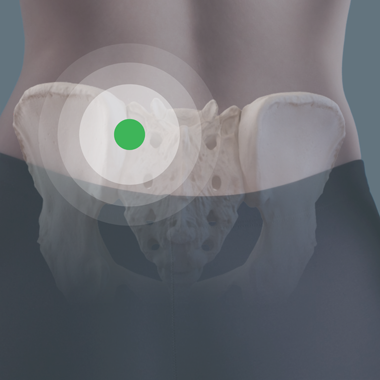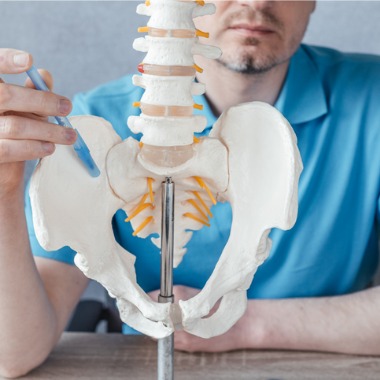May 11, 2021
Hypermobility vs.
Hypomobility: What is Causing
Your SI Joint Dysfunction?
SI joint dysfunction generally refers to pain in the SI joint region caused by abnormal motion in the sacroiliac joint. This is thought to cause chronic low back pain, groin pain, and/or leg pain, all of which can negatively impact one’s quality of life.
There are several causes for sacroiliac joint dysfunction, such as a traumatic event, pregnancy, spine surgeries, arthritis, and an abnormal walking pattern. However, hypermobility and hypomobility are at the root of the problem.

What is Hypermobility?
Hypermobility of the SI joint refers to increased or abnormal movement of the joint. Hypermobility causes the joint to be loose, which can lead to instability and pain in the lower back and hip.
The ligaments that encase the SI joint may be disrupted due to injury or degenerate due to age, which allows the joint to have excessive motion. Too much movement may inflame and disrupt the joint and surrounding nerves.
What is Hypomobility?
Hypomobility of the SI joint refers to a decrease in the range of movement, inhibiting the ability to stretch normally. Hypomobility is often caused by arthritis, which triggers the bones to rub against one another and create extreme pain.
Osteoarthritis is the most common form of arthritis that affects millions of people worldwide. This condition occurs when the protective cartilage that cushions the ends of the bones wears down. Osteoarthritis can cause the following symptoms:
- Joint pain
- Stiffness
- Tenderness
- Loss of flexibility
- Bone spurs
- Swelling
Treatment for SI Joint Pain
If sacroiliac joint dysfunction is the cause of your hip or low back pain, PainTEQ’s LinQ SI Joint Stabilization System may help you move freely again. The LinQ SI Joint Stabilization System helps patients with SI joint dysfunction regain joint stability during an efficient, minimally-invasive procedure with less downtime than traditional fusions.
Please contact PainTEQ today if you would like to learn more about our breakthrough treatment.



